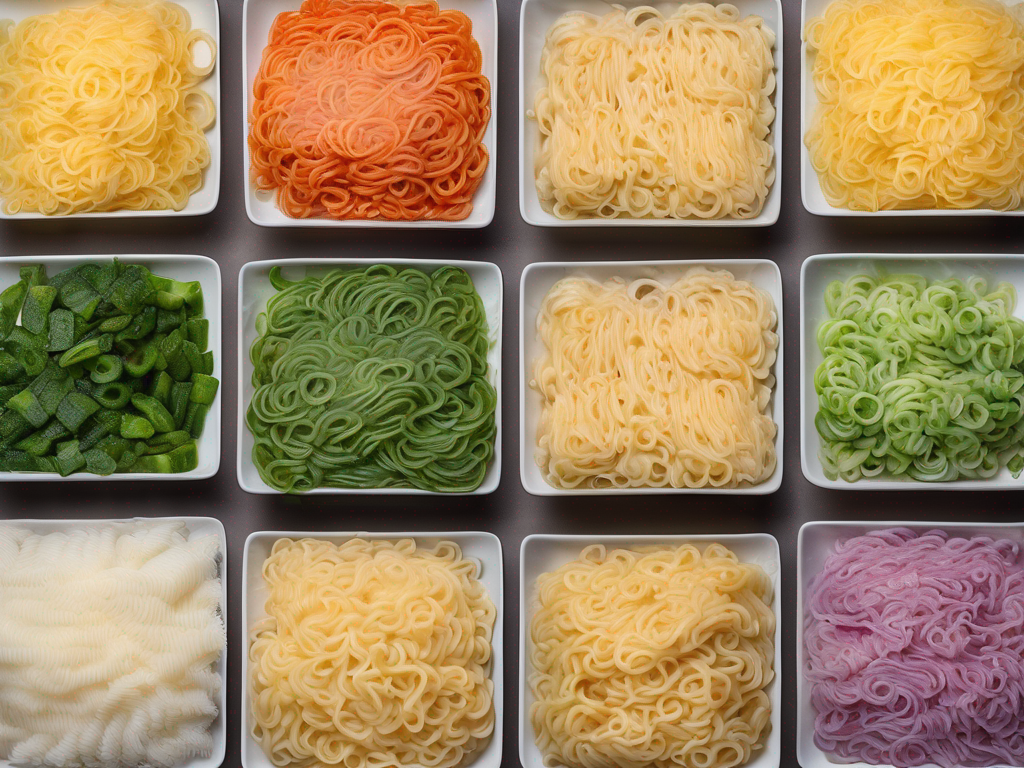
Signs that Frozen Ramen Noodles Have Gone Bad
Get Your Free Food Safety Cheat Sheet
30 most common foods with instant answers. Print it and stick it on your fridge—completely free!
Signs that Frozen Ramen Noodles Have Gone Bad
In recent years, the popularity of frozen ramen noodles has skyrocketed, allowing people to enjoy this delicious dish at home with convenience. However, like any perishable food item, frozen ramen noodles can go bad if not stored or handled properly. It's crucial to be able to recognize the signs that indicate your frozen ramen noodles have spoiled and should be discarded to prevent any potential foodborne illnesses. In this blog post, we will discuss the key indicators that your frozen ramen noodles may have gone bad and provide you with essential tips on food safety and storage. (Frozen ramen noodles)
How to Tell If Frozen Ramen Noodles Have Gone Bad
1. Changes in Appearance
- Ice crystals: If you notice large ice crystals or freezer burn on the surface of the noodles, it indicates that the noodles have been exposed to air and moisture, leading to a decline in quality.
- Discoloration: Any signs of discoloration, such as dark spots or a change in the overall color of the noodles, may suggest bacterial growth or oxidation, rendering them unsafe to eat.
- Slimy texture: If the noodles feel slimy or excessively mushy when thawed, it is a clear indication of spoilage.
2. Unpleasant Odor
- Rancid smell: Spoiled ramen noodles emit a strong, unpleasant odor that is often described as sour, musty, or rancid. If you detect any off-putting smells, it's best to discard the noodles immediately.
3. Weird Taste
- Off-flavors: If the noodles taste strange, spoiled, or bitter, it's a sign that they have deteriorated and should not be consumed. Eating spoiled food can lead to food poisoning and other health risks.
4. Expiration Date
- Check the expiration date: Always check the packaging for the expiration date of the frozen ramen noodles. Consuming noodles past their expiration date can pose health risks, as the quality and safety of the product may have diminished.
Proper Storage and Handling Tips for Frozen Ramen Noodles
1. Store at the Right Temperature
- Freezer temperature: Keep your frozen ramen noodles stored at 0°F (-18°C) or below to maintain their quality and prevent bacterial growth.
- Avoid temperature fluctuations: Fluctuations in temperature can cause freezer burn and compromise the texture and taste of the noodles.
2. Use Airtight Containers
- Transfer leftovers: If you have leftover cooked ramen noodles, store them in airtight containers or resealable bags to maintain freshness and prevent contamination.
3. Thaw Safely
- Thaw in the refrigerator: For best results, thaw frozen ramen noodles in the refrigerator overnight rather than at room temperature to prevent bacterial growth.
- Avoid refreezing: Once thawed, do not refreeze the noodles as this can affect their texture and flavor.
4. Follow Cooking Instructions
- Cook thoroughly: When preparing frozen ramen noodles, make sure to follow the cooking instructions provided on the packaging to ensure they are heated to a safe internal temperature.
Conclusion
Being able to recognize the signs that your frozen ramen noodles have gone bad is essential for maintaining food safety and preventing foodborne illnesses. By paying attention to changes in appearance, odor, taste, and expiration dates, you can ensure that you are consuming safe and delicious noodles. Additionally, following proper storage and handling tips will help extend the shelf life of your frozen ramen noodles and maintain their quality. Remember, when in doubt, it's always better to err on the side of caution and discard any noodles that show signs of spoilage. Stay safe and enjoy your noodles responsibly!
For more information on frozen ramen noodles, check out our guide to frozen ramen noodles. (Frozen ramen noodles)
Authoritative Food Safety References
These agencies and university labs inform every tip and health precaution we publish.
USDA FoodKeeper – Cold Storage Guidelines
Official refrigerator, freezer, and pantry timelines maintained by the U.S. Department of Agriculture.
Visit USDA FoodKeeperFDA Produce Safety Rule & Grower Guidance
Field-to-fridge handling practices that prevent contamination of fruits, vegetables, and leafy greens.
Visit FDA Produce SafetyCDC Foodborne Illness Prevention Hub
Surveillance-backed guidance on pathogens, symptoms, and steps to reduce foodborne illness risk.
Visit CDC Food SafetyUC Davis Postharvest Technology Center
University research detailing optimal storage atmospheres for produce after harvest.
Visit UC Davis PostharvestPenn State Extension – Home Food Preservation & Safety
Peer-reviewed extension bulletins on safe canning, chilling, and reheating practices.
Visit Penn State ExtensionGet Your Free Food Safety Cheat Sheet
30 most common foods with instant answers. Print it and stick it on your fridge—completely free! Want more? Upgrade to the complete guide with 70+ foods.
Scan your food directly and get instant safety info using our AI-powered camera feature.